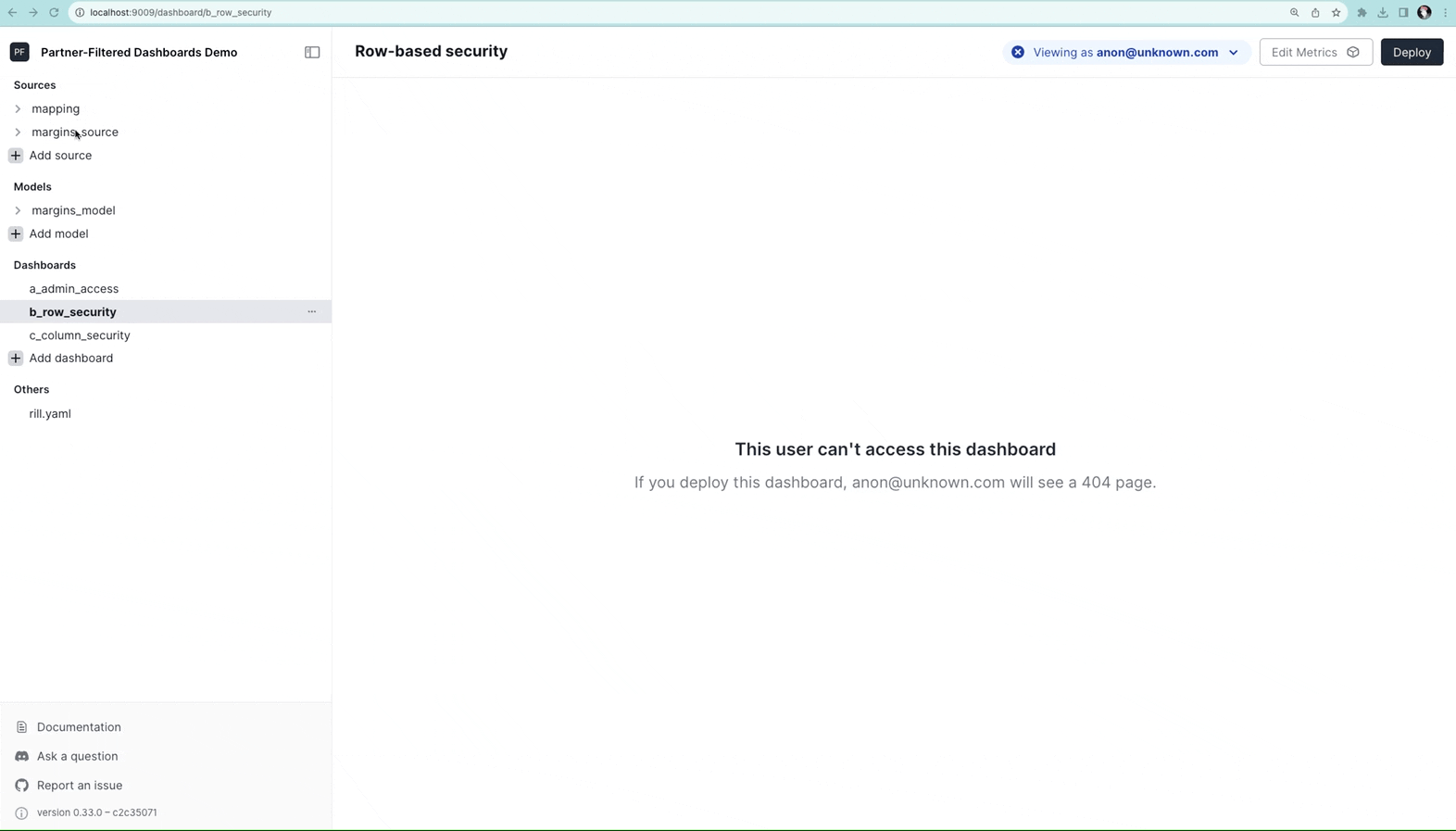Rill 0.33 - Advanced Security Policies and More! 📈
⚡ Rill Developer is a tool that makes it effortless to transform your datasets with SQL and create fast, exploratory dashboards.
To try out Rill Developer, check out these instructions and let us know over on Discord if you encounter any problems or have ideas about how to improve Rill Developer!
Unlock More Granular Dashboard Access with Advanced Security Policies! 🛡️
Advanced security policies give you more control over dashboard access. Here’s what’s new:
-
Dashboard Access: Handpick who can view specific dashboards.
-
Row-Level Access: Use SQL filters to define which rows a user has access to.
-
Selective Column Visibility: Choose to include or exclude dimensions and measures based on who is viewing the dashboard.
-
Mock users for easy testing: When developing locally, enable mock users to test your new granular security policies. Simply add them in your project’s rill.yaml file, then select them using the "View as" button on the dashboard. This lets you see what each user would see based on the policies you set.
Imagine the Possibilities: Configure Access by Team, Department, and Even External Partners 🌟
- Team-specific Dashboards: You can now define team or department specific data access rules on dashboards.
- Partner Dashboards: Collaborating with external partners? Generate custom dashboards where external stakeholders only see the data directly relevant to them—no more, no less.
For more details on security policies visit Security policies
More Features to Supercharge Your Workflow! 🚀
Toggle Sort Order in Leaderboards 🔄
Sort leaderboards by both top and bottom values to gain a comprehensive understanding of your metrics.
CLI Updates 💻
rill upgradeensures you're always on the latest version.rill start --resetallows you to freshen up your local database and fetch the latest data on start.- Pagination is now supported on all list commands like
rill project list.
